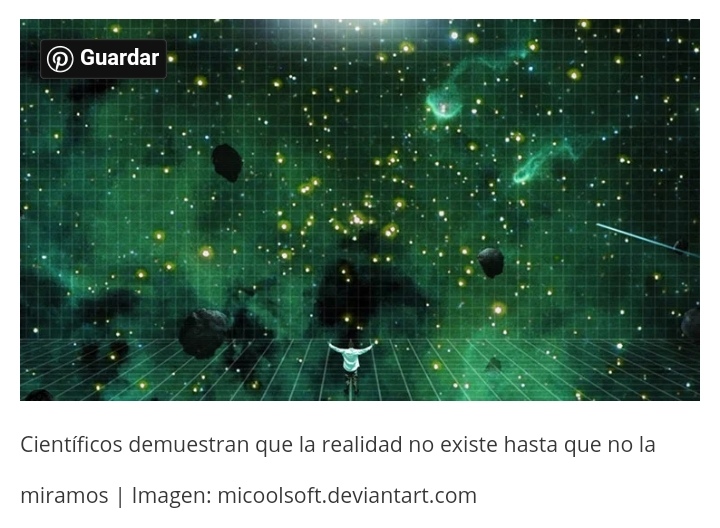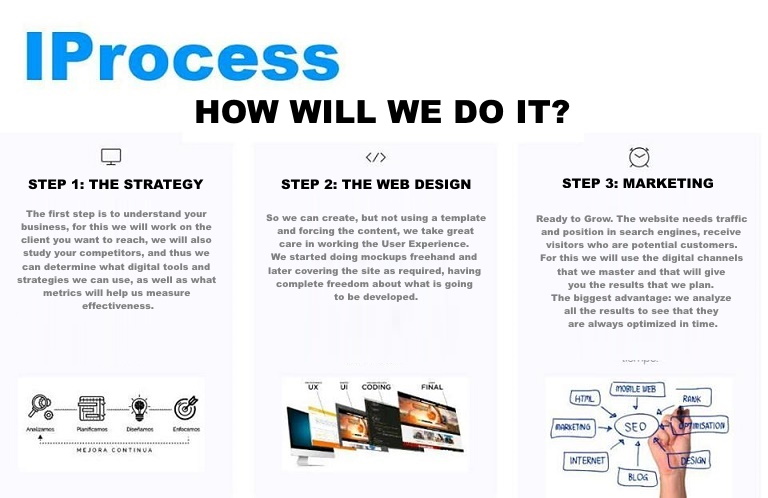WEB IProcess Pyme LITE!
Ideal for small companies that need productive modules, 10 corporate emails, 5 sections, 20 product catalog, 5 SEO campaigns, e-commerce.

 Español
Español
 English
English
A quantum experiment shows that reality emerges through the act of measurement; extrapolating this calls into question the nature of the reality in which we believe we move and suggests that consciousness affects matter.
Quantum weirdness or quantum rarity allowed the researchers to make this photograph of a cardboard cutout in the shape of a cat with light that never directly interacted with the animal.
One of the strangest and most fascinating questions that quantum physics raises is the possibility that the world we experience is being generated by our perception of it.
In scientific terms, that the phenomena manifest themselves in one way or another according to the act of measurement.
And until they are measured, until the gaze of the instrument rests on them, they remain in a state of indefiniteness that defies all logic: they are and are not, they are alive and dead, they are waves and particles. Or, in another way, they do not exist or they are all at once. The infinite power of the void.
A group of Australian scientists published the results of an experiment that confirms this notion so close to quantum physics, proving in some way that reality does not exist until we measure it, at least not reality on a quantum scale, which, although tiny , is what constitutes all things in the universe.
The experiment is a recreation of another experiment proposed by the recently deceased John Wheeler, the physicist who developed the theory of a participating universe in which the subject is not separate from the object. Wheeler had suggested in his wave-particle "extended decision" experiment that only when we measure atoms do their properties emerge into reality.
Scientists first managed to trap a single helium atom in a state of Bose-Einstein condensation. This atom was then passed through a pair of laser beams, creating a grating pattern that acted as a crossroads to scatter the atom`s path, in the same way that a solid grating scatters light.
Next, another light grid was added at random to recombine the paths, creating an interference, as if the atom had chosen both paths. Without this second grid, the atom behaved as if it had only chosen a single path.
However, the random number that determined whether the grid was added was generated after the atom passed through the crossroads. This suggests that future measurement was affecting the atom`s decision in the past. According to Dr. Andrew Truscott: "The atoms did not travel from A to B. It was only when they were measured at the end of the journey that wave or particle behavior existed."
This is further proof of quantum weirdness or the strange nature of reality that, if we pay attention, deserves us to question many of our beliefs about how the universe works.
Explaining why this happens is extremely complex and at the moment highly speculative. However, one of the explanations that has the most traction is the possibility that consciousness is a constitutive property of the universe. If consciousness also exists at a quantum level, this type of behavior could be explained as the effect of mind on matter.
Analyzing a previous experiment intended to demonstrate the same phenomenon, Dr. Dean Radin of the Noetic Institute wrote:
Quantum measurement is a problem as it violates the commonly accepted doctrine of realism, which assumes that the world in general is independent of observation. The conflict between naive realism and what the quantum measurement problem entails forced many of the pioneers of quantum theory to consider the meaning of observation and measurement.
Some such as Pauli, Jordan, and Wigner believed that some aspect of consciousness - referring to mental capacities such as attention, alertness, and intention - was indispensable to understanding quantum measurement. Jordan wrote: “Observations not only disturb what is measured, they produce it… We cause the electron to assume a certain definite position. We produce the measurement result ourselves. "
Although there are many indications that consciousness should enter the equation, in our model of what nature is not only as an epiphenomenon or a brain phantom produced randomly by evolution, we do not see that many experiments are done with this in mind.
This possibility, although it is philosophically contemplated by some of the most brilliant scientists, fails to break the paradigmatic egg and venture into the process of scientific verification. Dean Radin concludes that:
The notion that consciousness may be related to the formation of physical reality has been associated more with medieval magic and new age ideas than with sober science. As a result, it is safer for a scientist`s career to avoid dealing with such dubious subjects, and subsequently experiments that examine these ideas are difficult to find in physics. In fact, the taboo is so great that until recently it had been extended to any examination of the foundations of quantum theory. For more than 50 years these experiments have been considered inappropriate for a serious researcher.
Furthermore, two individuals can see two different realities about the same event and it is true for both!
Publication Date: 2020-10-03
Source:

.jpeg)
.jpeg)
.jpeg)
.jpeg)
.jpeg)
.jpeg)
.jpeg)
.jpeg)

Ideal for small companies that need productive modules, 10 corporate emails, 5 sections, 20 product catalog, 5 SEO campaigns, e-commerce.

Ideal to start your presence on the internet, catalog of 5 products, updating documents, hosting, corporate emails and more!

Ideal for small companies that need productive modules, 10 corporate emails, 5 sections, 20 product catalog, 5 SEO campaigns, e-commerce.

Ideal to start your presence on the internet, catalog of 5 products, updating documents, hosting, corporate emails and more!







